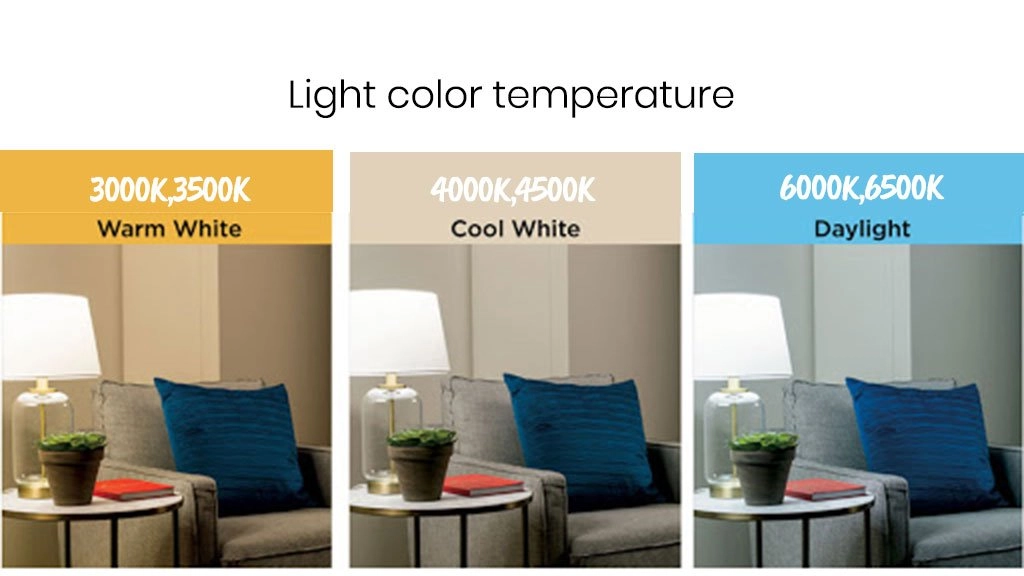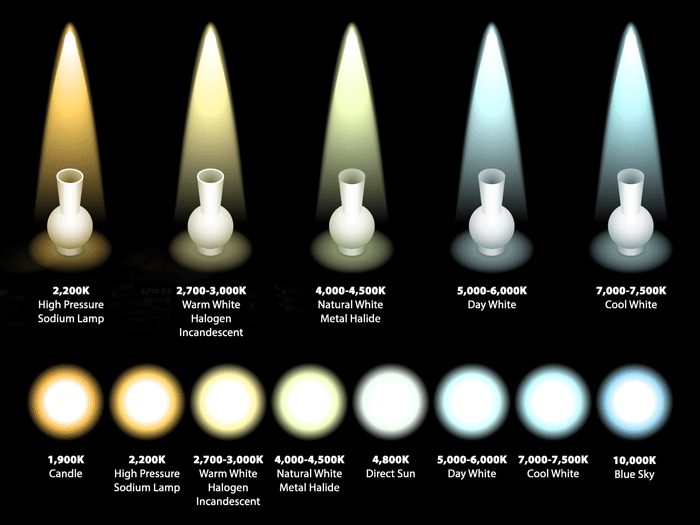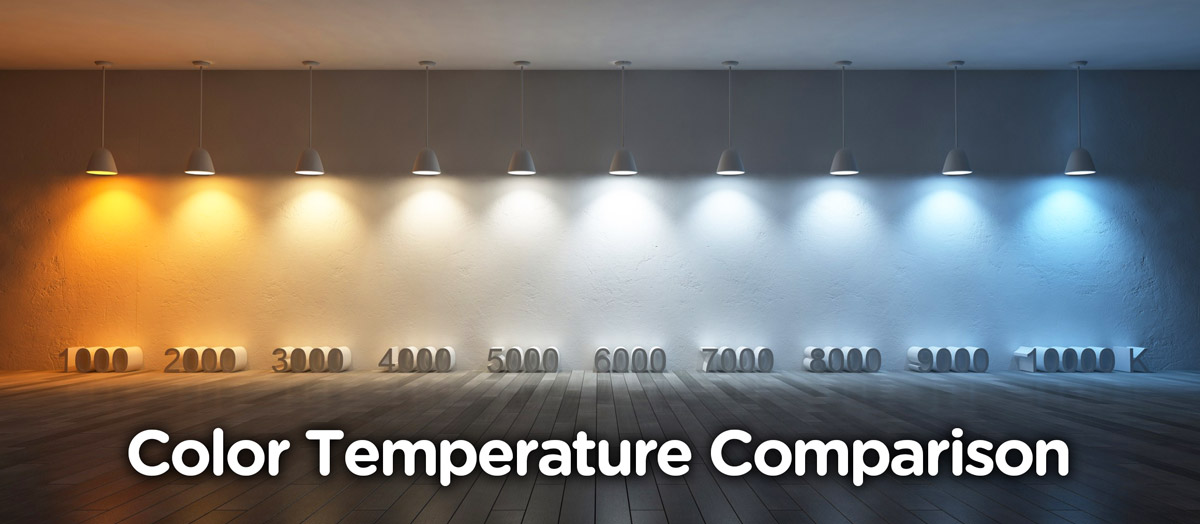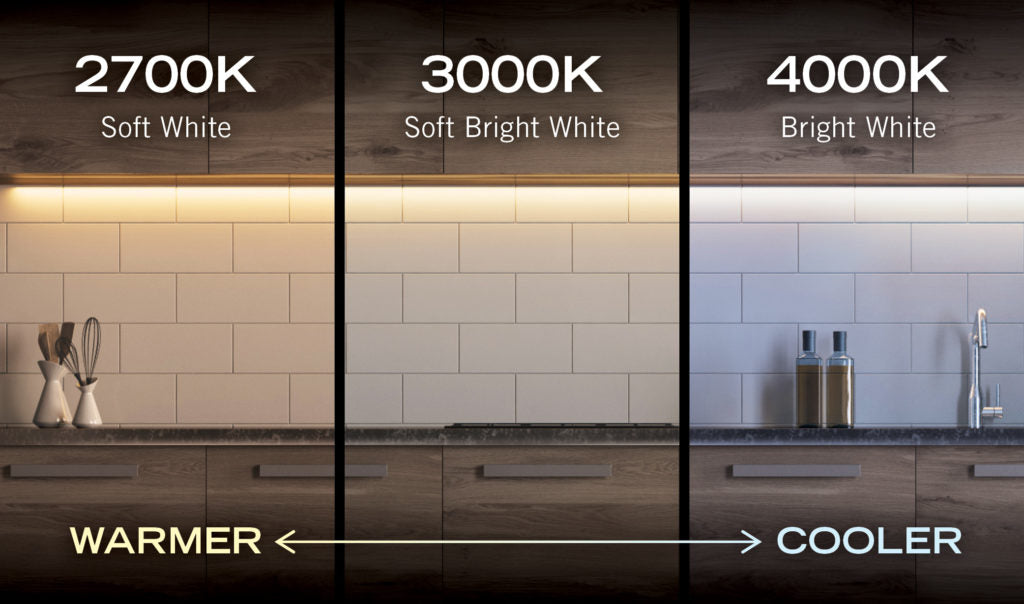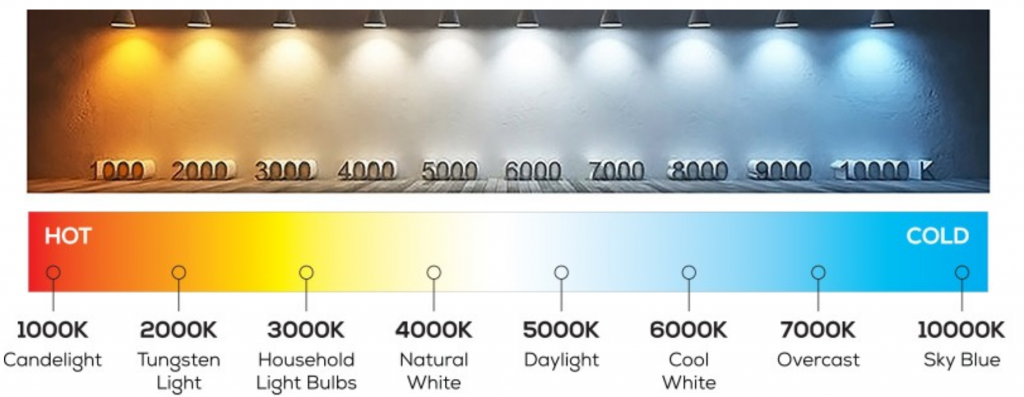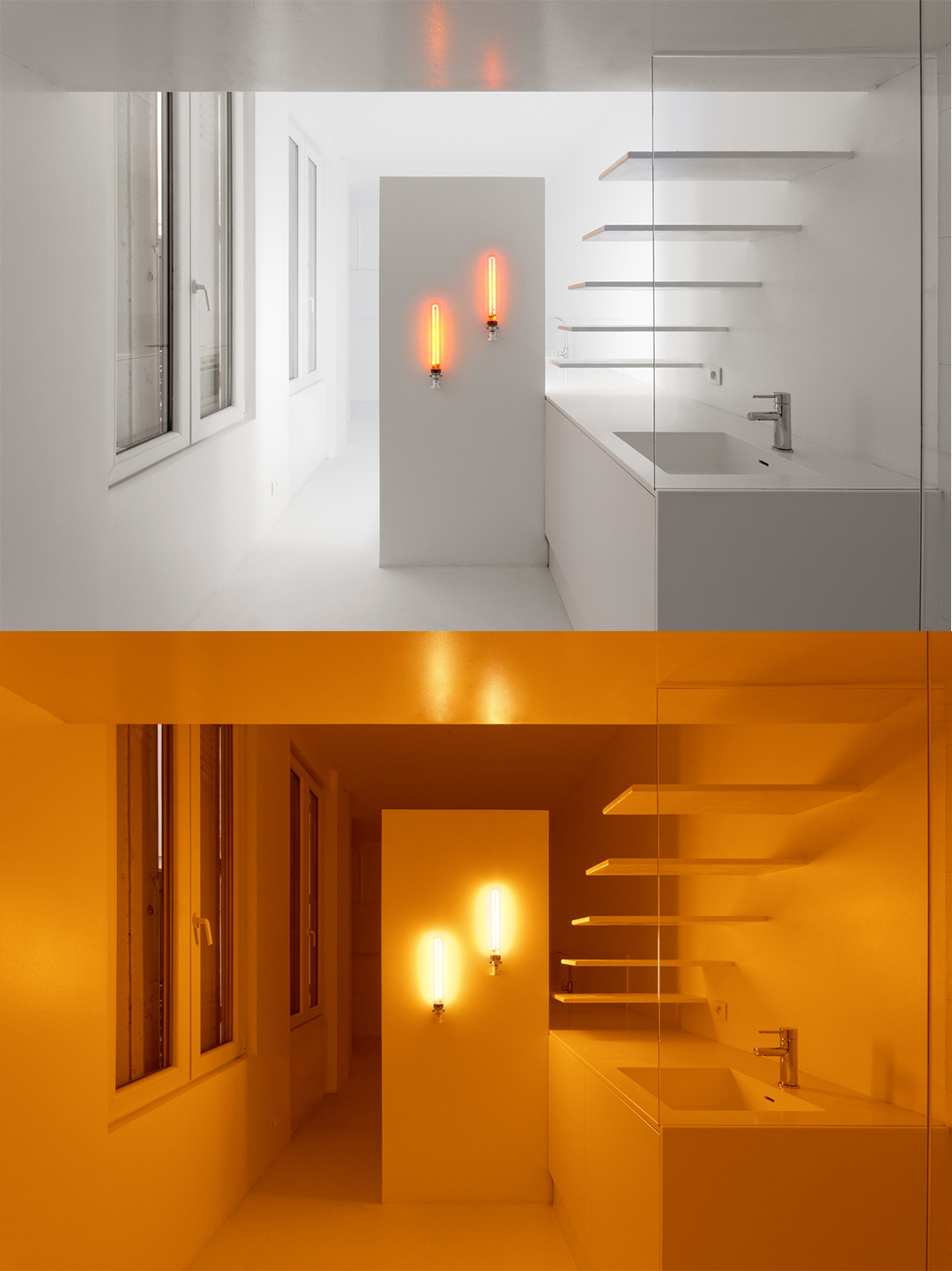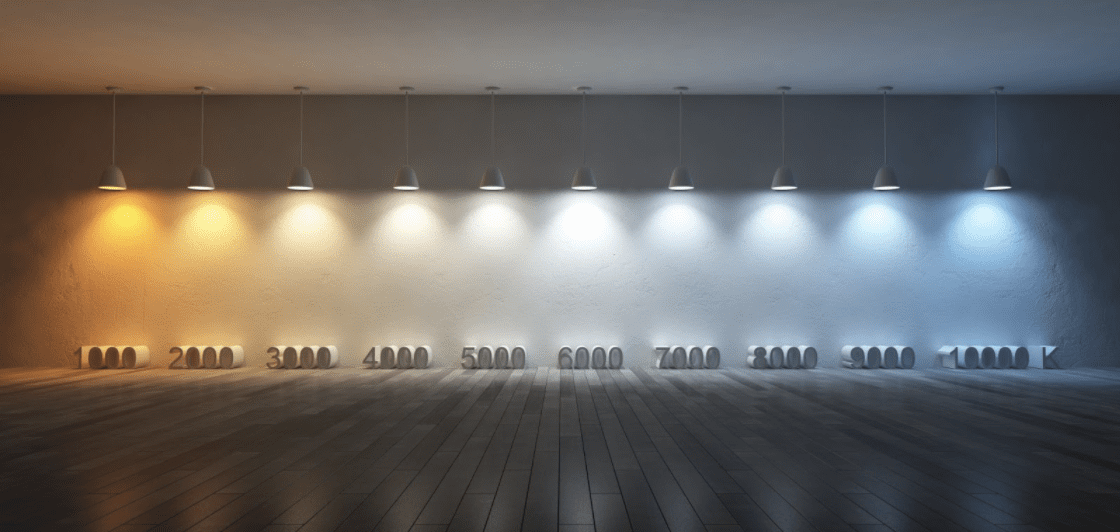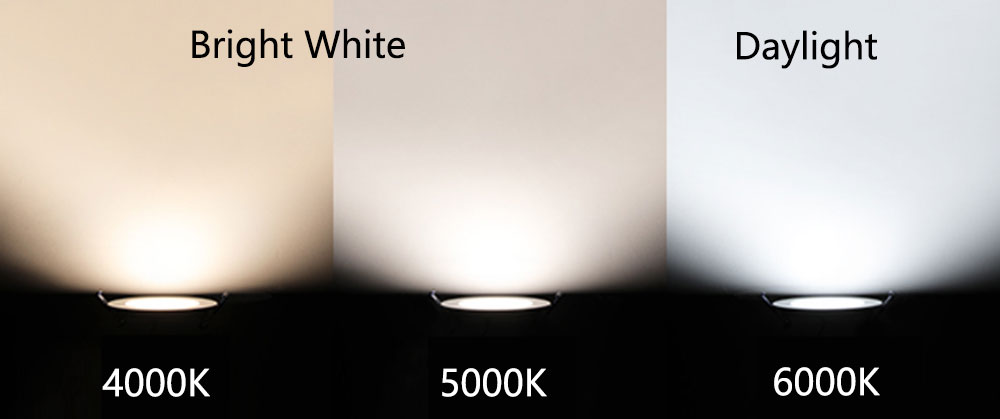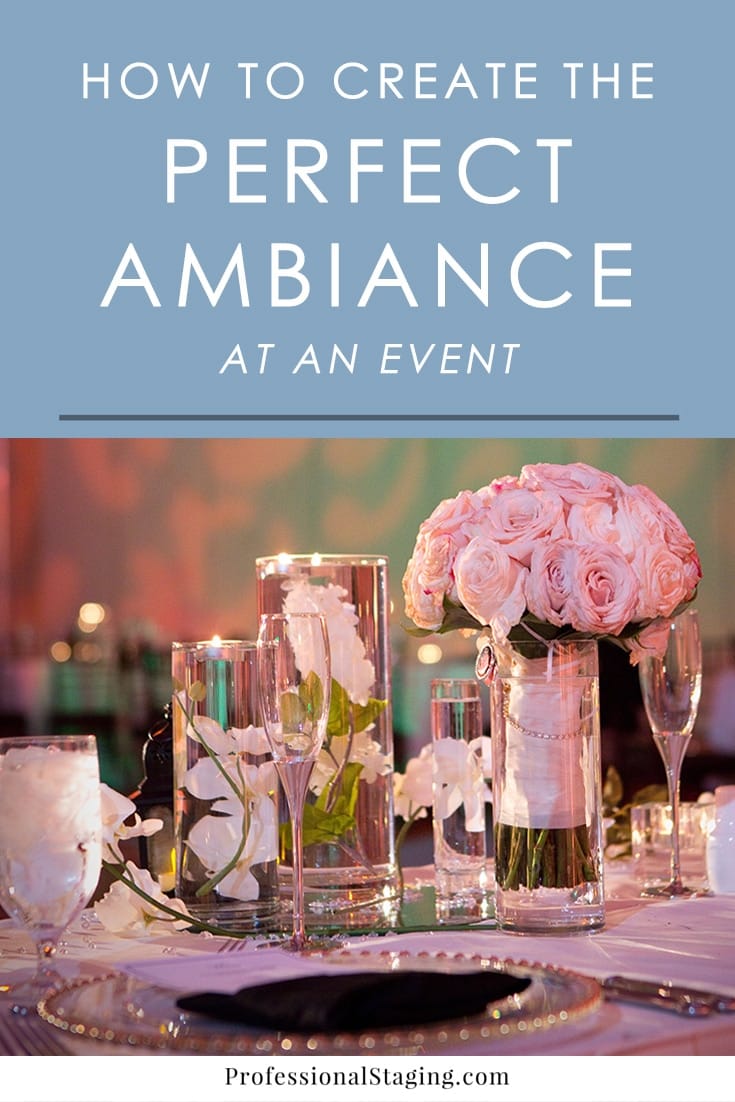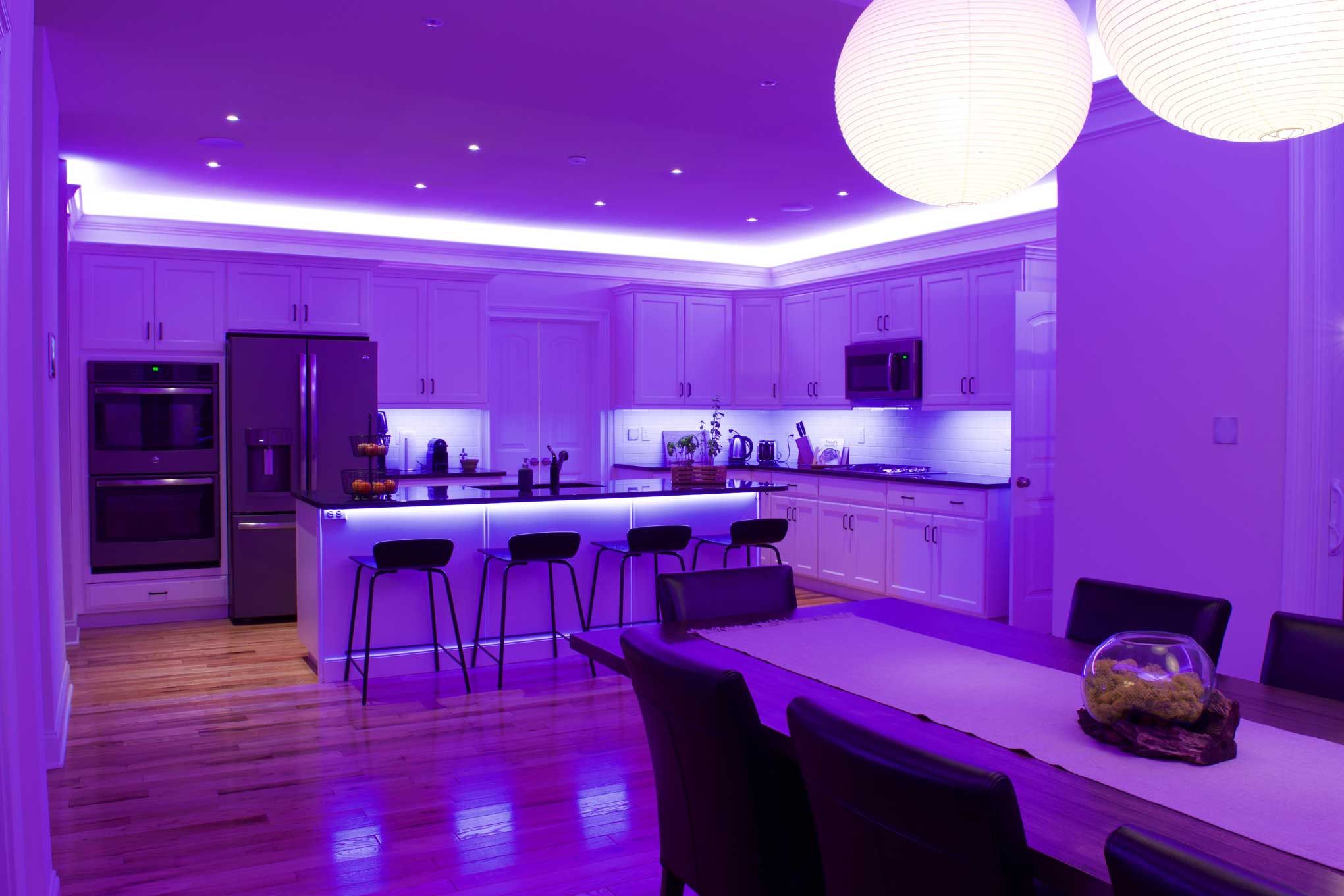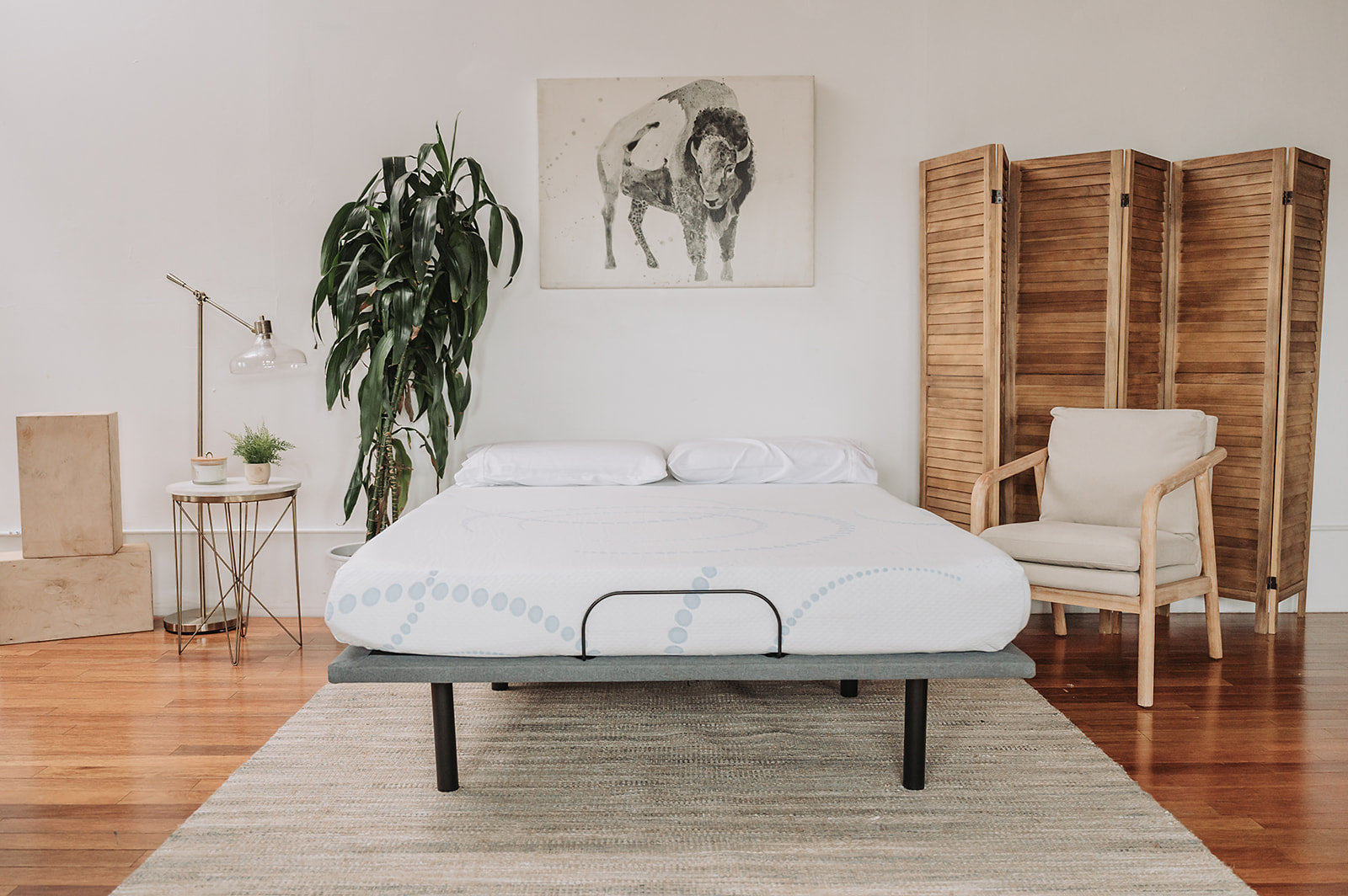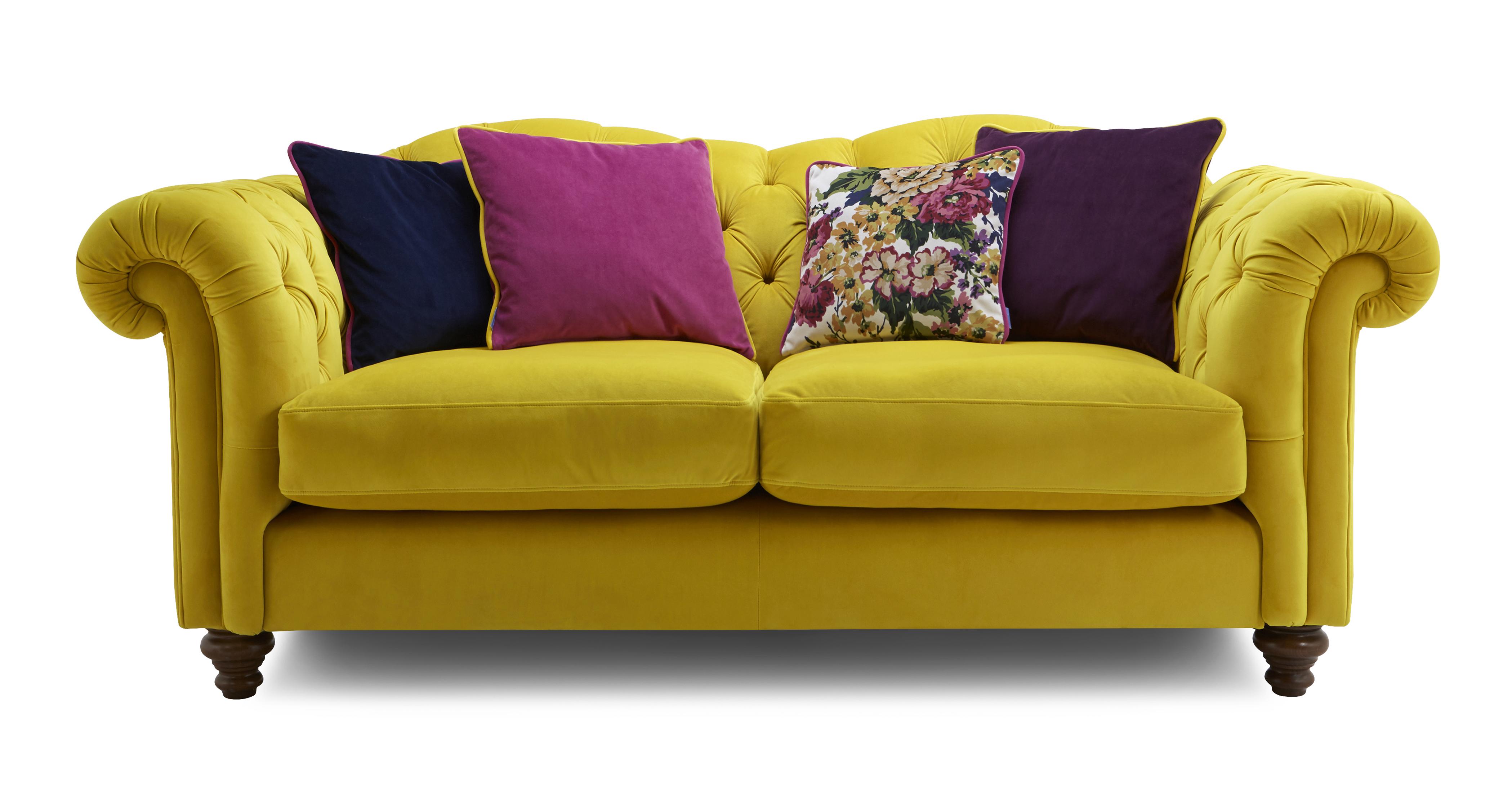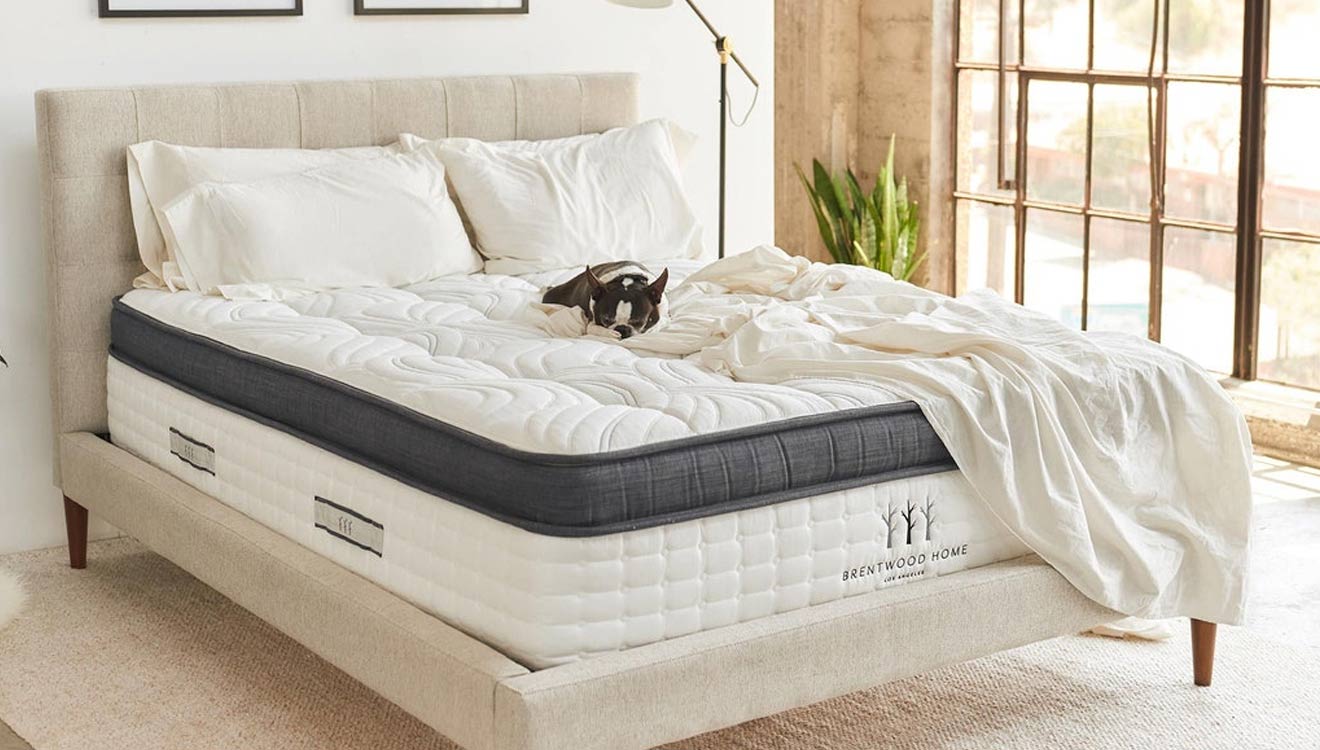When it comes to lighting your living room, there are various factors to consider, and one of the most important is the color temperature of your light bulbs. The two most common color temperatures for living rooms are 3000k and 5000k. Each has its own unique characteristics and can greatly impact the overall look and feel of your space. In this article, we will explore the differences between 3000k and 5000k lighting and help you decide which color temperature is best for your living room.3000k vs 5000k Living Room: Which is Better for Your Space?
Before we dive into the comparison, let’s first understand what 3000k and 5000k mean. The “k” stands for Kelvin, which is a unit of measurement for color temperature. The lower the number, the warmer the light, and the higher the number, the cooler the light. 3000k is considered a warm white light, while 5000k is categorized as a cool white light. 3000k: This color temperature is often compared to the warm, golden light of sunrise or sunset. It creates a cozy and inviting atmosphere, perfect for living rooms where you want to relax and unwind. It also enhances warm colors in your décor, making them appear more vibrant and rich. 5000k: On the other hand, 5000k is often compared to natural daylight. It is a bright and crisp light that mimics the color temperature of midday sun. This color temperature is ideal for tasks that require focus and concentration, making it a popular choice for home offices and kitchens.Understanding the Differences Between 3000k and 5000k Lighting
Now that you understand the differences between 3000k and 5000k, you may be wondering which one is best for your living room. The answer depends on the purpose and ambiance you want to create in your space. 3000k: If your living room is primarily used for relaxing and entertaining, 3000k lighting may be the better option. The warm and cozy light will create a comfortable and inviting atmosphere, perfect for movie nights or gatherings with friends and family. 5000k: If your living room doubles as a workspace or you prefer a brighter and more energetic ambiance, 5000k lighting may be the way to go. The cool white light will help you stay focused and productive, making it ideal for reading, working on projects, or even hosting game nights.Choosing the Right Color Temperature for Your Living Room: 3000k vs 5000k
When it comes to choosing the right light bulbs for your living room, there are a few things to keep in mind. Energy Efficiency: In terms of energy efficiency, 3000k and 5000k bulbs are fairly similar. However, 5000k bulbs tend to use slightly more energy due to their higher color temperature and brightness. This may not make a significant difference in your electricity bill, but it is something to consider. Color Rendering: Another factor to consider is color rendering, which is the ability of a light source to accurately display colors. Both 3000k and 5000k bulbs have a high color rendering index (CRI), meaning they can accurately show the colors in your living room. However, 3000k lighting may enhance warm colors more, while 5000k lighting may enhance cooler colors. Compatibility: It is important to check the compatibility of your light fixtures before purchasing either 3000k or 5000k bulbs. Some fixtures may only be designed for a specific color temperature, so it is important to double-check before making a purchase.Comparing 3000k and 5000k Bulbs for Your Living Room Lighting
Ultimately, the best color temperature for your living room depends on your personal preferences and the function of your space. If you want a warm and cozy atmosphere, go for 3000k lighting. If you prefer a bright and energetic ambiance, 5000k lighting may be the better choice. However, you can also consider a combination of both color temperatures for different areas in your living room. For example, you may want 3000k lighting for your seating area and 5000k lighting for your work desk. This will provide both comfort and functionality in one space.3000k vs 5000k: Which Color Temperature is Best for Your Living Room?
The color temperature of your lighting can greatly impact the overall look and feel of your living room. The right color temperature can enhance your décor, create a certain ambiance, and even affect your mood. It is important to carefully consider your options and choose the one that best suits your needs and preferences.The Impact of 3000k vs 5000k Lighting in Your Living Room
If you are still unsure which color temperature is best for your living room, here are a few things you can do to help you decide: Consider the function of your living room: Think about how you primarily use your living room and what type of lighting would be most beneficial for those activities. Experiment with different bulbs: Purchase a few bulbs in both 3000k and 5000k and try them out in your living room. This will give you a better idea of how each color temperature looks and feels in your space. Consult a professional: If you are still unsure, consider consulting a lighting professional who can provide you with expert advice and help you make the best decision for your living room.How to Decide Between 3000k and 5000k Lighting for Your Living Room
As mentioned earlier, there is not a significant difference in energy efficiency between 3000k and 5000k bulbs. However, if energy efficiency is a top priority for you, you may want to consider LED bulbs. LED bulbs are energy-efficient and can come in various color temperatures, including 3000k and 5000k.3000k vs 5000k: Which is More Energy Efficient for Your Living Room?
The great thing about lighting is that it can be easily adjusted to create different moods and ambiances. You can use a combination of 3000k and 5000k lighting to create the perfect balance in your living room. 3000k for relaxation: Use 3000k lighting in your living room for a cozy and relaxing atmosphere. This is perfect for unwinding after a long day or hosting a casual get-together with friends. 5000k for productivity: If you have a designated workspace in your living room, use 5000k lighting to help you stay focused and productive. This will provide you with the bright and energetic light you need to get things done.Creating the Perfect Ambiance with 3000k and 5000k Lighting in Your Living Room
Both 3000k and 5000k lighting have their own unique benefits, and the best choice for your living room will depend on your personal preferences and needs. However, some general benefits of these color temperatures include: Enhanced décor: The right color temperature can enhance the colors in your living room and make your décor appear more vibrant and appealing. Improved mood and productivity: The right lighting can greatly affect your mood and energy levels. Choosing the appropriate color temperature can help you feel more relaxed or motivated, depending on your needs. Versatility: Both 3000k and 5000k lighting can be used in various areas of your living room, making them versatile options for any space.Understanding the Benefits of 3000k and 5000k Lighting for Your Living Room
The Importance of Lighting in House Design

Creating the Perfect Atmosphere
 When it comes to designing a living room, lighting is often an overlooked factor. However, the type of lighting you choose can greatly impact the overall atmosphere and ambiance of the room. The two most popular options for living room lighting are
3000k and 5000k
bulbs. While both provide ample lighting, they differ in terms of the color temperature they emit, which can drastically change the feel of a space.
When it comes to designing a living room, lighting is often an overlooked factor. However, the type of lighting you choose can greatly impact the overall atmosphere and ambiance of the room. The two most popular options for living room lighting are
3000k and 5000k
bulbs. While both provide ample lighting, they differ in terms of the color temperature they emit, which can drastically change the feel of a space.
The Warmth of 3000k
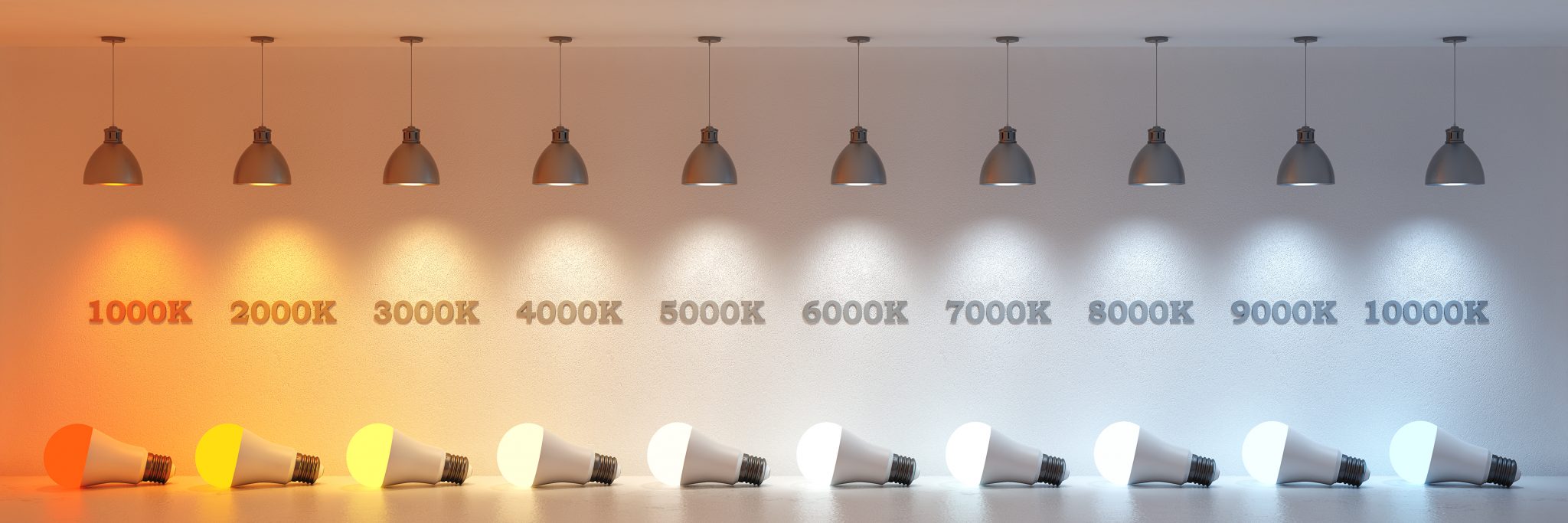 3000k
bulbs produce a warm, yellow light that is similar to natural sunlight in the late afternoon. This type of lighting is often favored in living rooms as it creates a cozy and inviting atmosphere. The warm tones can also make a room feel more intimate and comforting, perfect for relaxing or entertaining guests. Additionally,
3000k
bulbs are great for highlighting warmer colors in the room, such as reds, oranges, and yellows.
3000k
bulbs produce a warm, yellow light that is similar to natural sunlight in the late afternoon. This type of lighting is often favored in living rooms as it creates a cozy and inviting atmosphere. The warm tones can also make a room feel more intimate and comforting, perfect for relaxing or entertaining guests. Additionally,
3000k
bulbs are great for highlighting warmer colors in the room, such as reds, oranges, and yellows.
The Brightness of 5000k
 On the other hand,
5000k
bulbs emit a cooler, bluer light that resembles natural daylight. This type of lighting is often preferred in workspaces or areas where tasks need to be performed as it provides a brighter and more energizing atmosphere. In a living room,
5000k
bulbs can create a more modern and crisp feel, perfect for showcasing cooler colors like blues, greens, and purples.
On the other hand,
5000k
bulbs emit a cooler, bluer light that resembles natural daylight. This type of lighting is often preferred in workspaces or areas where tasks need to be performed as it provides a brighter and more energizing atmosphere. In a living room,
5000k
bulbs can create a more modern and crisp feel, perfect for showcasing cooler colors like blues, greens, and purples.
The Perfect Balance
 While both
3000k and 5000k
bulbs have their own unique benefits, the key is finding a balance between the two. Too much of one type of lighting can make a room feel unbalanced and unnatural. Consider incorporating both types of bulbs in your living room design for a well-rounded and harmonious atmosphere. You can use
3000k
bulbs for general lighting and
5000k
bulbs for task lighting, such as reading or working on a laptop.
While both
3000k and 5000k
bulbs have their own unique benefits, the key is finding a balance between the two. Too much of one type of lighting can make a room feel unbalanced and unnatural. Consider incorporating both types of bulbs in your living room design for a well-rounded and harmonious atmosphere. You can use
3000k
bulbs for general lighting and
5000k
bulbs for task lighting, such as reading or working on a laptop.
Final Thoughts
 When it comes to designing a living room, lighting is a crucial element that should not be overlooked.
3000k and 5000k
bulbs both have their own unique qualities that can greatly impact the overall atmosphere of a room. By finding a balance between the two, you can create a space that is both functional and inviting, perfect for any occasion. So when deciding on your living room lighting, don't be afraid to mix and match to achieve the perfect balance.
When it comes to designing a living room, lighting is a crucial element that should not be overlooked.
3000k and 5000k
bulbs both have their own unique qualities that can greatly impact the overall atmosphere of a room. By finding a balance between the two, you can create a space that is both functional and inviting, perfect for any occasion. So when deciding on your living room lighting, don't be afraid to mix and match to achieve the perfect balance.









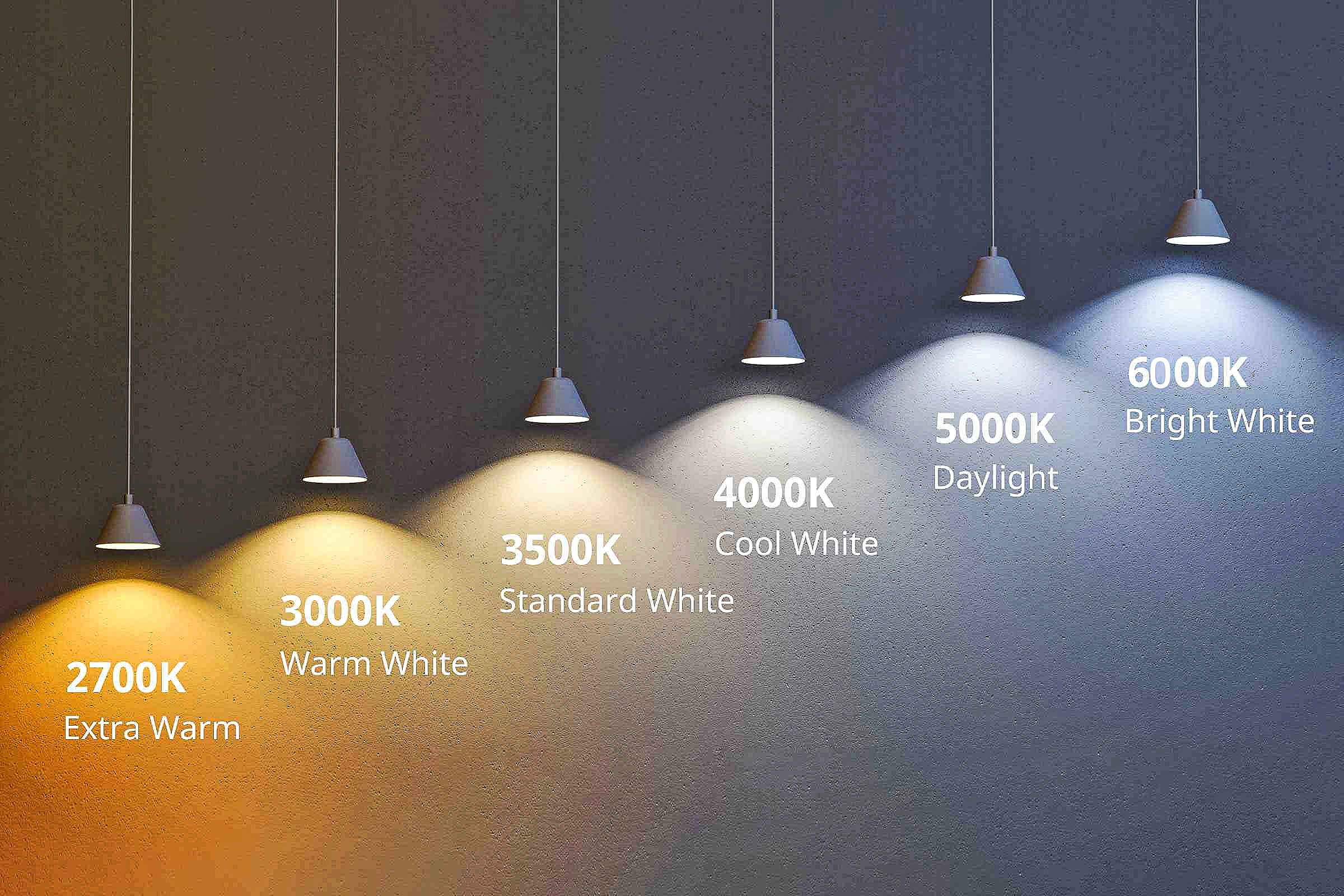



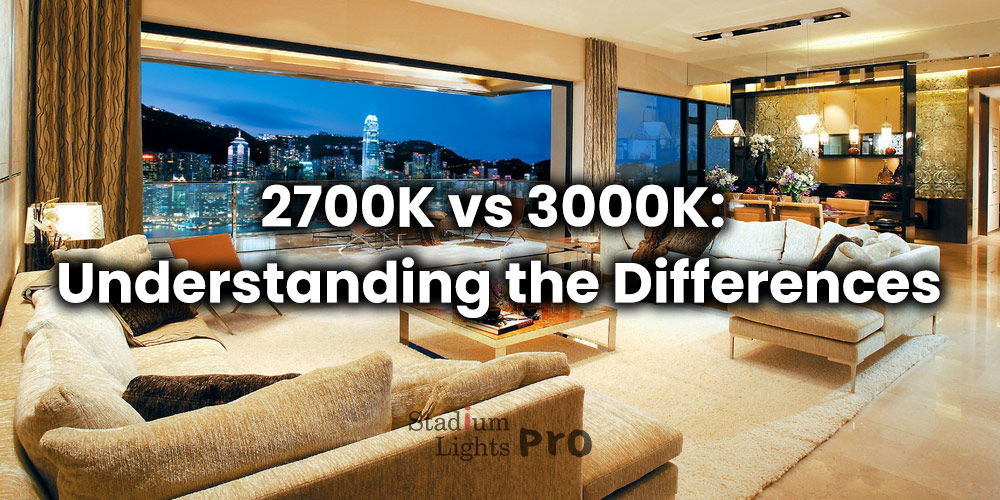

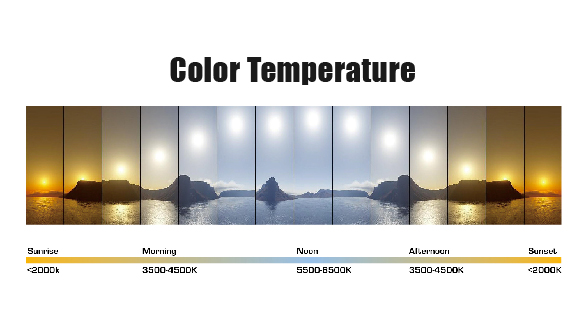

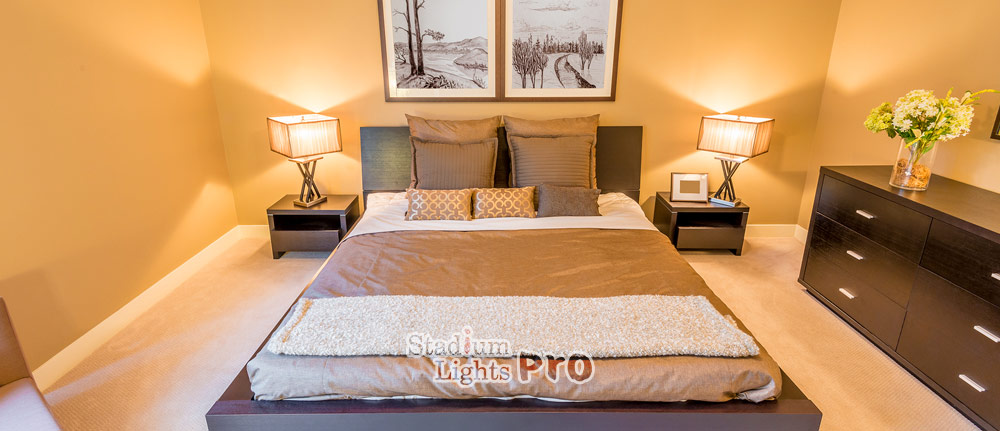
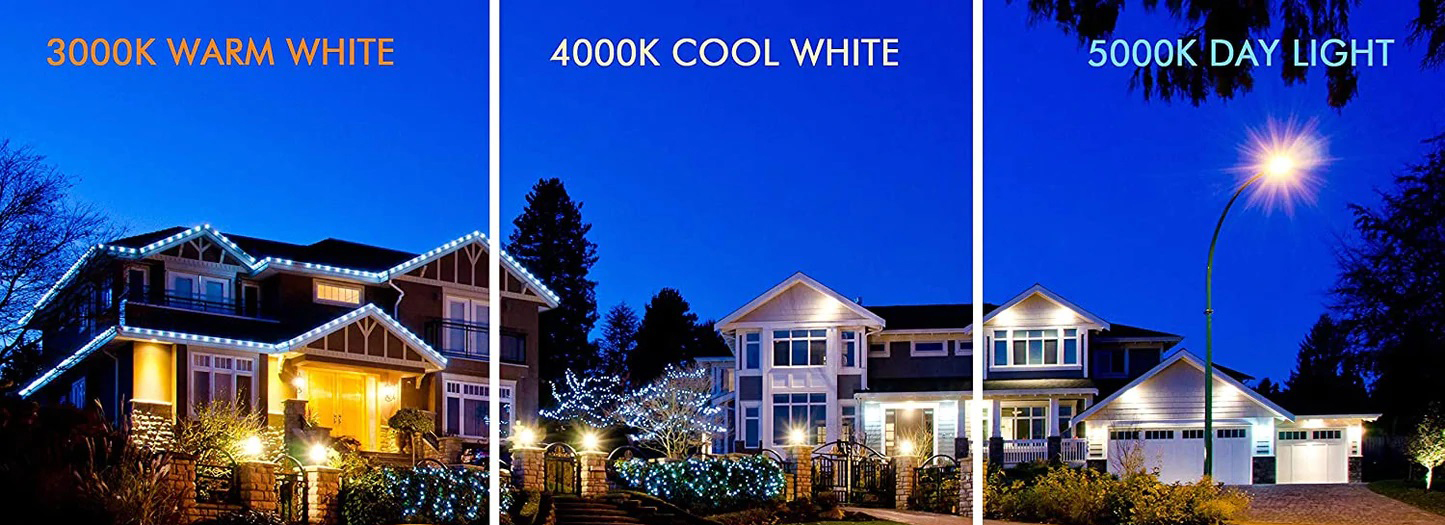

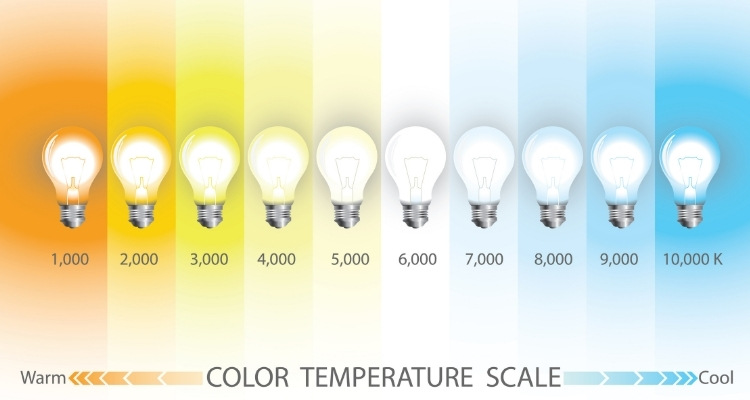
:max_bytes(150000):strip_icc()/living-room-area-rugs-1977221-e10e92b074244eb38400fecb3a77516c.png)


